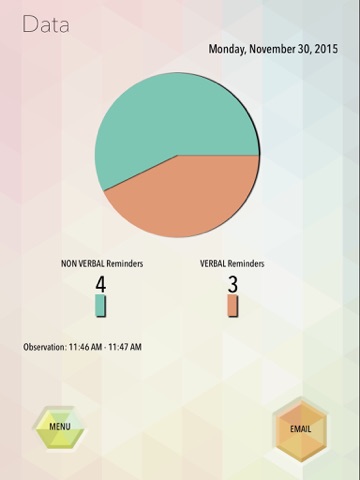
Attention Cues app for iPhone and iPad
Developer: Teacher Learning Network
First release : 21 Mar 2016
App size: 41.59 Mb
Peer observation is a proven strategy for increasing your effectiveness as a teacher. Research has shown that focused, specific, data-rich feedback and collegial conversations lead to real improvement in practice.
Each App in this suite is designed to give teachers feedback on one element of their practice. By inviting a colleague to observe your use of verbal and non-verbal attention cues in the classroom you’ll be best able to strategically use them.
Verbal and non-verbal attention cues: Pie graph
What this App measures
This App measures the number of times in a defined period that the teacher uses verbal or non-verbal cues to gain attention or to re-direct student behaviour.
Why that matters
Increased on-task time leads to improved student learning. The least intrusive intervention by the teacher will lead to increased on-task time. See more on the video.
What you need to know to use this App effectively
Verbal reminders are the things that are said to the group and individual students to keep them on task.
Non-verbal reminders are the gestures the teacher uses to maintain attention without interrupting what the teacher (or another student) is saying.
Tap on the verbal or non-verbal button each time you observe a colleague using such a cue.
It is most useful when students are gathered in groups with the teacher the central figure e.g. mat time
What does the data show
The completed data will provide a ratio of the number of times the teacher uses verbal cues compared to non-verbal cues. It is expressed in visual form, in a pie graph, for a quick visual analysis.
How the data can be used in teacher coaching
Following an observation period, the data can be used to shape a discussion about whether the least intrusive (or the most appropriate) interventions were used. Increasing the repertoire of both verbal and non-verbal cues could follow. See more on the video.



